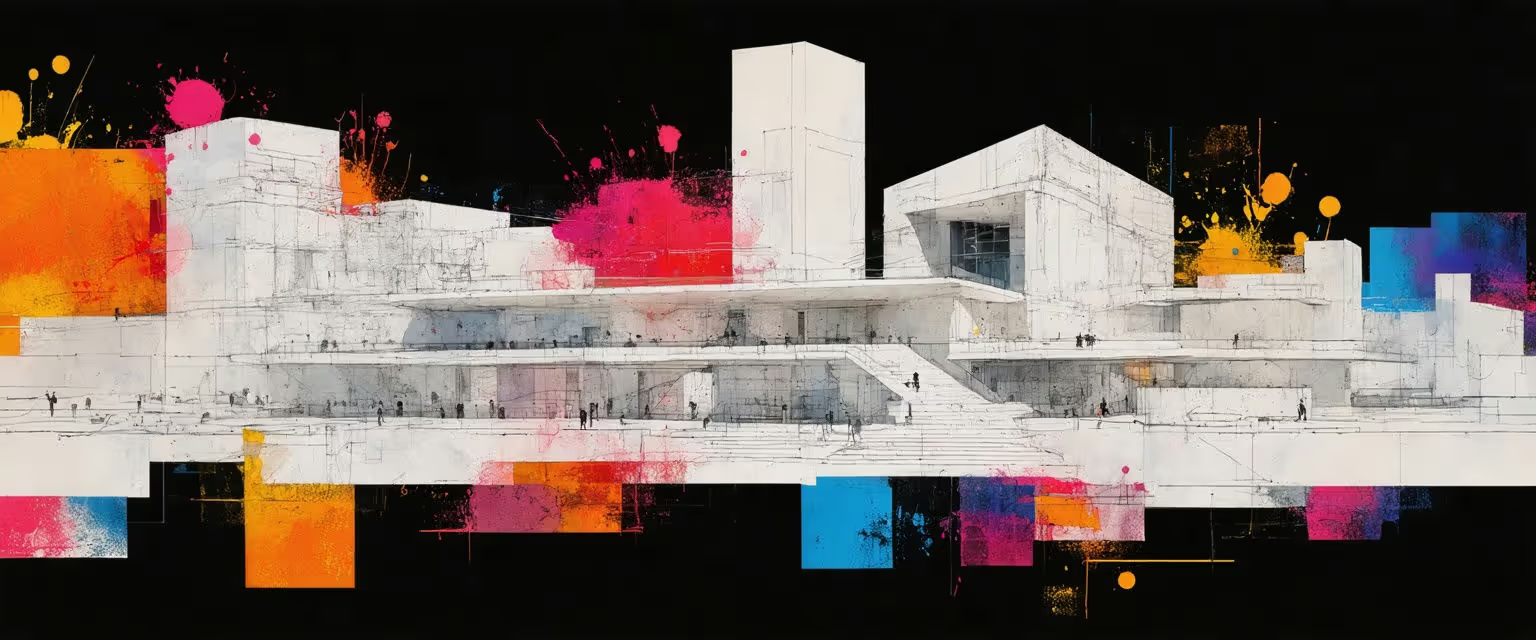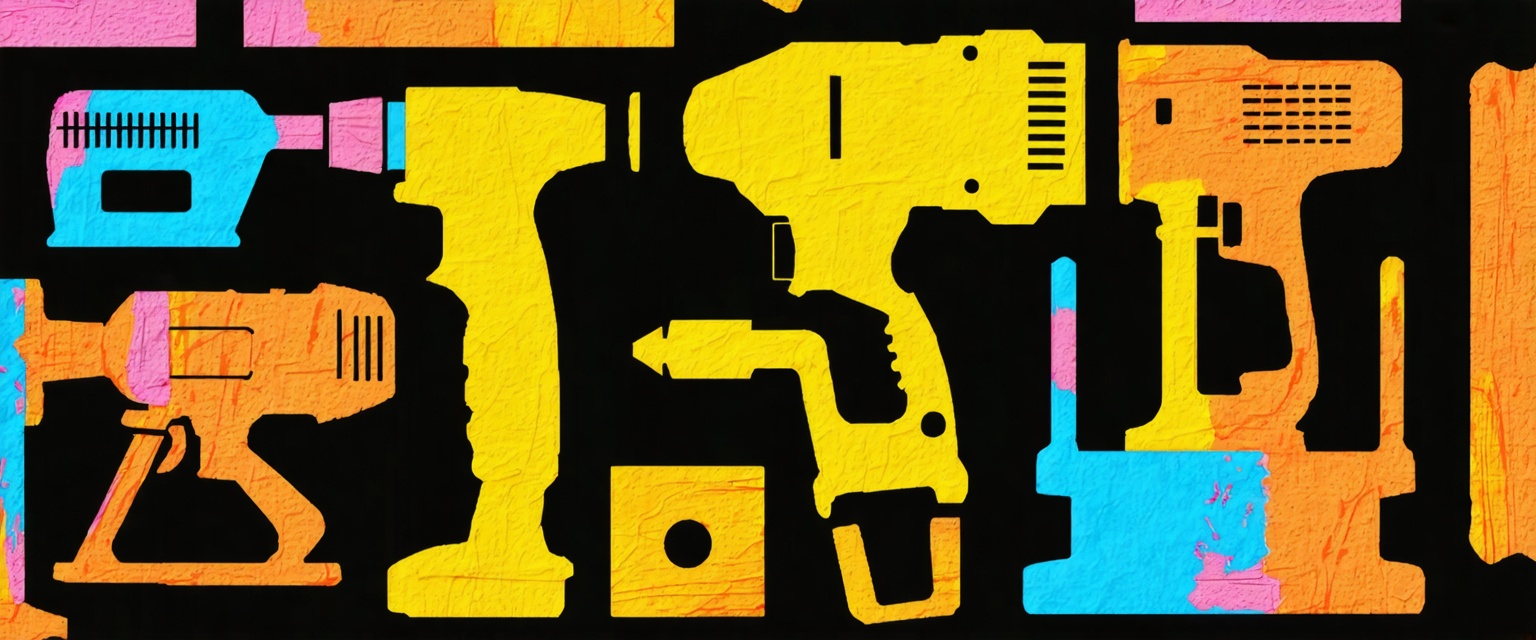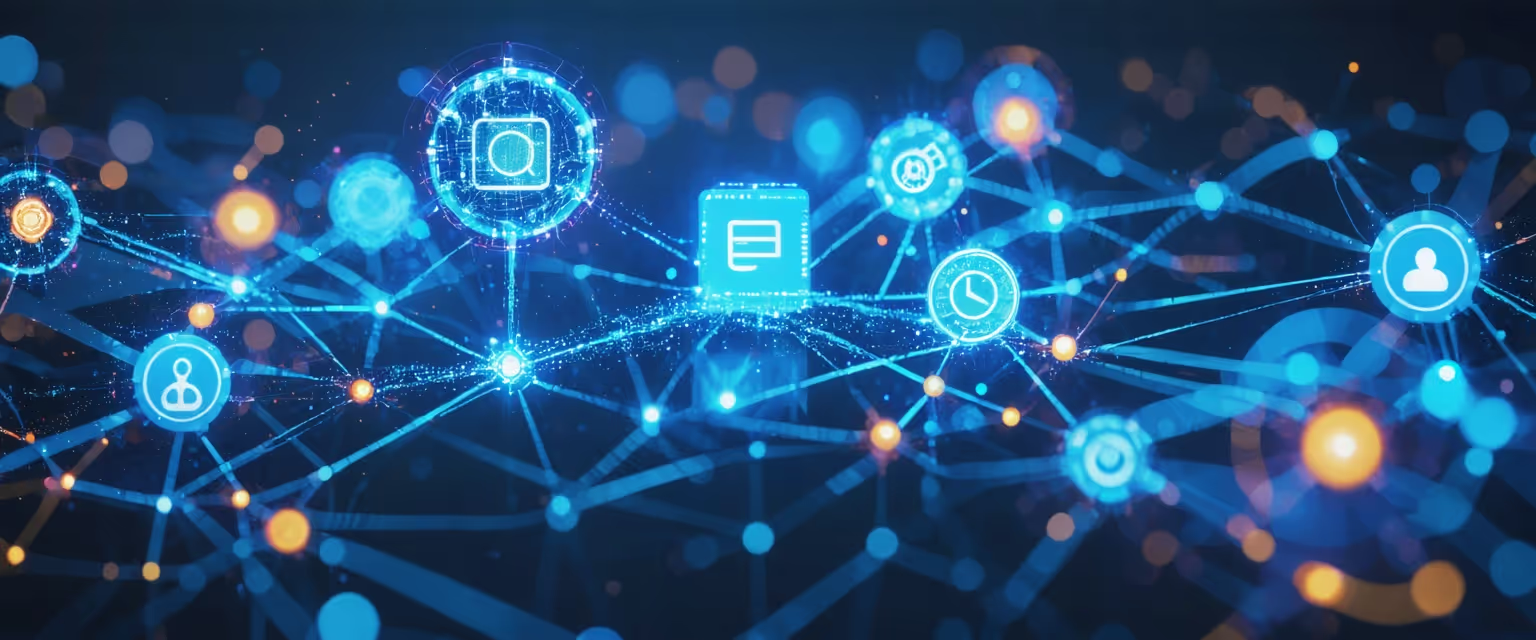All Posts
Construction - AI-Powered Project & Workflow Automation
Revolutionizing Infrastructure Maintenance: How AI Agents Identify Cracks in Bridge Deck Photos

Discover how AI agents identify cracks in bridge deck photos, revolutionizing infrastructure maintenance with speed, accuracy, and safety.
In construction, bridges require meticulous monitoring for dangerous deterioration, yet traditional inspection methods are painfully slow, dangerously subjective, and prohibitively expensive. This is where AI technology offers a transformative solution.
By harnessing AI agents that identify cracks and deterioration in bridge deck photos, we can revolutionize how we monitor and maintain aging bridges. Artificial intelligence enhances this capability to identify problems earlier, make better maintenance decisions, and protect public safety while maximizing limited resources.
The Role of AI Technologies in Bridge Inspection
Overview of AI Technologies
The AI revolution has introduced several key technologies that are particularly valuable for bridge inspection:
- Machine Learning (ML): Using artificial neural networks, support vector machines, and random forests, ML systems can analyze vast datasets to identify patterns and make predictions about structural conditions. These systems learn from data, mimicking human brain functions to streamline decision-making processes in bridge maintenance.
- Computer Vision (CV): By enabling AI agents to identify cracks and deterioration in bridge deck photos, computer vision automates the extraction of critical information from image data. Modern CV applications now utilize deep learning methodologies to analyze structural components with unprecedented detail and accuracy, enabling both qualitative and quantitative assessments of bridge conditions.
- Internet of Things (IoT): AI and IoT in construction enable continuous monitoring of bridges, contrasting with the sporadic nature of traditional visual inspections. This continuous data collection provides more comprehensive insights into structural behavior over time.
- Unmanned Aerial Vehicles (UAVs): Drones equipped with cameras and sensors can access areas that are difficult or dangerous for human inspectors to reach, collecting high-quality image data without traffic disruptions or safety risks.
AI vs. Traditional Methods
Traditional bridge inspection relies heavily on visual assessment by human inspectors. While valuable, this approach comes with significant limitations:
- Labor and Time Intensive: Manual inspections require substantial human resources and time, often necessitating bridge closures that disrupt traffic and commerce.
- Error Prone: Human judgment introduces variability and potential for oversight. Inspectors might focus on easily accessible areas, missing critical issues in hard-to-reach locations.
- Environmental Impact: Conventional inspection methods can lead to increased energy consumption, dust generation, and noise.
- Discrete Rather Than Continuous: Traditional inspections provide only periodic snapshots of bridge conditions rather than ongoing monitoring.
In contrast, AI-powered inspection systems offer several advantages:
- Enhanced Accuracy: AI agents identify cracks and deterioration in bridge deck photos using computer vision and machine learning algorithms to detect minute details that might escape human notice, providing more consistent and thorough assessments.
- Improved Safety: By using UAVs and robots, inspections can be conducted without putting human inspectors at risk, particularly in hazardous areas of bridge structures.
- Real-time Analysis: AI applications in construction safety enable machine learning algorithms to analyze data from job sites in real time, identifying potential structural issues, safety risks, and inefficiencies at speeds far exceeding manual methods.
- Comprehensive Coverage: AI-powered systems can inspect all areas of a bridge, including those typically difficult for human inspectors to access, enabling more complete structural assessments.
A notable application of AI in bridge inspection is multilevel structural components detection and segmentation. This approach allows for the automatic identification and segmentation of bridge images to extract vital information about bridge types and components—a critical step for enabling thorough diagnosis of bridge conditions.
The integration of non-destructive technologies such as ground penetrating radar and infrared thermography, coupled with AI analysis, further enhances inspection capabilities without compromising structural integrity. As bridges continue to age and infrastructure demands grow, these AI-driven inspection methods will become increasingly essential for maintaining public safety while optimizing maintenance resources.
Challenges in Monitoring Bridge Health and Safety
Bridges are critical infrastructure components that directly impact social, economic, and environmental sustainability. Their complex construction, with elements both above and below ground, makes them particularly vulnerable to environmental factors and structural loads. As these structures age, monitoring their health becomes increasingly vital to prevent catastrophic failures and ensure public safety.
Necessity of Timely Inspections
Bridge inspections serve as the first line of defense against potential structural failures. The financial implications of bridge maintenance further underscore the importance of timely inspections.
Effective inspection regimes help bridge owners implement appropriate maintenance strategies, whether corrective (reactive), preventative (scheduled), or predictive (data-driven). These approaches are essential for extending bridge lifespans and ensuring they remain safe for public use.
Challenges Faced
Conventional bridge inspection methods face numerous limitations:
- Human Error and Subjectivity: Manual inspection processes rely heavily on human judgment, introducing inconsistency and potential oversight. Inspectors might unconsciously focus on easier-to-access areas while missing critical issues in more complex or hazardous zones.
- Resource Intensity: Traditional inspections require significant time, labor, and financial resources. The process often involves large teams and specialized equipment, which can strain limited maintenance budgets.
- Limited Accessibility: Many structural components are difficult to access, particularly in larger or more complex bridges. This physical limitation can lead to incomplete assessments of critical areas.
- Data Management Inefficiencies: Manual data entry associated with traditional safety reporting introduces risks of duplication, transcription errors, and inaccurate entries that may mask serious structural issues.
- Delayed Response to Deterioration: The time lag between inspections, data analysis, and implementation of remedial measures can allow deterioration to progress unchecked, potentially compromising structural integrity.
- Technological Limitations: While various non-destructive testing methods exist—including impact echo testing, infrared imaging, and half-cell potential assessment—each has limitations in detecting certain types of deterioration or damage.
These challenges highlight the need for more advanced, automated, and objective inspection methodologies, including AI in construction monitoring, that can overcome the limitations of conventional approaches while enhancing the accuracy and timeliness of bridge health monitoring.
AI Methods and Technology Used in Bridge Inspection
How AI Agents Identify Cracks and Deterioration in Bridge Deck Photos
The integration of artificial intelligence in bridge inspection has transformed traditional approaches, offering more precise, efficient, and safer alternatives. AI agents identify cracks and deterioration in bridge deck photos using advanced technologies that not only enhance the accuracy of inspections but also provide engineers with reliable data for informed decision-making.
Computer Vision & UAVs
Computer vision technology, an important component of AI in photo analysis, plays a pivotal role in automating the extraction of meaningful information from images captured during bridge inspections. This technology enables both qualitative and quantitative assessment of bridge conditions by applying deep learning techniques to automate tasks traditionally performed by human inspectors.
Unmanned Aerial Vehicles (UAVs) have become integral to modern bridge inspection procedures. These devices can capture image data with minimal traffic obstruction and access hard-to-reach areas, significantly enhancing inspection efficiency and safety.
UAVs allow for visual data collection from various angles and heights, providing both 2D and 3D images depending on the equipment used. This capability is particularly valuable for multilevel structural component detection and segmentation, which provides essential information about bridge types and their components for detailed diagnostics.
Non-Destructive Testing Techniques
Modern bridge inspection leverages numerous non-destructive testing (NDT) technologies to detect and characterize deterioration in concrete bridge decks without causing damage.
- Impact Echo Testing: Utilizes impact-generated sound waves to detect deeper delamination in bridge structures, offering greater sensitivity than traditional sounding techniques.
- Ultrasonic Pulse Echo: Uses ultrasonic waves to assess material integrity beneath the surface.
- Ground-Penetrating Radar: Employs radar pulses to image subsurface conditions and detect anomalies.
- Infrared Thermography: Detects differences in temperature indicating delamination between top and bottom surfaces of bridge decks, particularly effective during rapid temperature changes.
- Half-Cell Potential (HCP): A non-destructive electrochemical evaluation method that assesses the likelihood of corrosion in steel reinforcements within concrete.
- Electrical Resistivity: Evaluates the resistivity of concrete to assess corrosion risk.
- Microwave Moisture Technique: Measures moisture content in concrete structures.
- Galvanostatic Pulse Measurement: Measures corrosion rates in reinforcement through electrical current application.
These technologies, combined with AI in hazard detection, are particularly important for detecting internal damage like vertical cracks or delamination, which can lead to punch-through failures if left unaddressed. The rapid detection of these degradations is vital for ensuring operational safety and infrastructure longevity.
AI Algorithms and Systems
The true power of modern bridge inspection comes from the AI algorithms that process and analyze data collected through UAVs and NDT techniques. These systems employ various data science approaches including:
- Deep Learning: Enables sophisticated analyses of structural integrity by identifying patterns in collected data that might be imperceptible to human inspectors.
- Computer Vision Algorithms: Specialized for automatically identifying structural components in captured bridge images, providing crucial information for detailed diagnostics.
- Data Mining: Data Mining extracts patterns and insights from large volumes of inspection data to identify deterioration trends and predict future maintenance needs.
By implementing AI agents, organizations can automate complex data analysis tasks, enhancing efficiency and accuracy.
The combination of UAVs, NDT techniques, and AI algorithms creates a powerful ecosystem for computer vision-based bridge inspection that surpasses traditional methods in efficiency, safety, and accuracy. As these technologies continue to develop, they promise even greater capabilities for maintaining our aging infrastructure.
How Agentic AI Simplifies Construction Task Automation
For construction project managers handling complex projects and seeking to streamline operations, Datagrid's data connectors and AI agents offer a transformative solution. This powerful platform seamlessly integrates with critical construction management systems, automating documentation workflows and daily tasks to free up valuable time for project oversight and client relationships.
Imagine connecting your core construction software like Procore, PlanGrid, or Autodesk BIM 360 with Datagrid's AI-powered platform. Suddenly, RFPs, submittals, change orders, and daily reports flow effortlessly between systems, eliminating manual data entry and reducing communication gaps.
AI agents can automatically process incoming bid documents, cross-reference specifications against historical data, and flag potential issues for project manager review. They can even track permit status updates and deadline requirements across multiple jurisdictions.
Datagrid's integration capabilities extend far beyond just construction-specific software. It connects seamlessly with popular project management tools like Microsoft Project and Primavera P6, allowing your team to access real-time schedule updates and resource allocation data without switching between applications. Financial systems like Sage 300 or QuickBooks can be linked, enabling automated cost tracking and budget forecasting.
The real power of Datagrid lies in its ability to automate complex, time-consuming tasks:
- Document management - AI agents can analyze incoming submittals, RFIs, and change orders, extract critical information, and route them to appropriate team members. This dramatically speeds up review cycles and keeps projects moving forward.
- Safety compliance - By connecting to safety management systems, the platform can automatically monitor incident reports, equipment certifications, and worker qualifications, triggering alerts for any compliance issues.
- Progress tracking - The platform can monitor daily reports, photos, and schedule updates across systems, generating automated progress reports and identifying potential delays before they impact the critical path.
- Communication - Integrations with platforms like Slack and Microsoft Teams ensure important updates, such as RFI responses or safety incidents, can be automatically routed to the right team members, ensuring swift action and collaboration.
By leveraging Datagrid's data connectors and AI agents, construction project managers can transform their operations. Routine documentation is handled automatically, data flows seamlessly between systems, and managers are empowered with AI-driven insights.
This allows your team to focus on what truly matters: delivering successful projects, maintaining client relationships, and growing your business in an increasingly competitive market.
Simplify Construction Management with Agentic AI
Ready to revolutionize your construction project management with AI-powered automation? Datagrid is your solution for:
- Seamless integration across all major construction platforms (Procore, PlanGrid, BIM 360)
- AI-driven RFP analysis and bid management
- Automated submittal and change order processing
- Real-time project insights and schedule optimization
See how Datagrid can help you increase process efficiency.












